Icons: Tony Visconti Captures Live Magic with The Kin
NOHO, MANHATTAN: Riddle us this: When is your first album not your debut album? The answer is…When you’re The Kin, and you’re in the studio recording your emotionally moving pop-rock creations with none other than Tony Visconti producing.
Founded in 2005 by the Australia-to-NYC transplants Isaac and Thorald Koren, The Kin became more than two guitarist/singer brothers with a huge gift for songwriting, when they recruited famed subway hand drummer Shakerleg to join them. So even though The Kin had released two independent studio albums — 2007’s Rise and Fall and 2009’s The Upside – only now do they see the band in its complete form.
“We’re calling this our first album, based on the fact that’s our first record together as a trio,” Thorald explains. “After all these years, we’ve found our distinction.”
As a result, the self-titled collection that’s currently in the works and due for release on Interscope Records this year is serving as a retrograde studio premiere for The Kin, a band that long ago made its mark as an elite live act. As evidence of their on-stage prowess, consider a marathon seven-month residency at NYC’s Rockwood Music Hall, a live CD/DVD documenting a show there, and the fact that Interscope pursued the band heavily after seeing their hypnotic hold on an audience at the Venice, CA venue The Stronghold.
A visit with The Kin during a recent session at Germano Studios in NoHo showed that they were already in a highly productive groove with the legendary Visconti. A Brooklyn born, Britain-bred bassist, composer and arranger, Visconti started working as a producer in 1967 and never stopped, making his name producing 12 David Bowie albums (including Space Oddity, The Man Who Sold the World, Young Americans, Low, Heroes, Lodger, Scary Monsters, and Heathen), and 13 albums for Marc Bolan’s T. Rex. Thin Lizzy, the Moody Blues, the Alarm, and many more are all entries in Visconti’s classics-packed discography.
Visconti had liked what he heard of The Kin’s demos, but it was his experience of one of their live gigs that sold him on being a producer for their record.
“My manager told me beforehand, ‘It’s a band like no other – the drummer doesn’t play with drumsticks, and there’s no bass!’” Visconti recalls, seated at the SSL Duality console in Germano’s Studio 1. “I thought, ‘This is a Zen parable: How do you make a rock record with no drumsticks or bass?’”
Soon Visconti found himself as one member of a 300+ audience “jammed like sardines” to see The Kin at Rockwood Music Hall. No slouch at evaluating talent on the stage – his first experience of Tyrannosauras Rex was an electrifying set at London’s UFO Club – Visconti was excited by what he saw.
“Vocals came easy to them – two singers in harmony,” he recalls. “Isaac was pumping out bass on a microKorg, and the drummer plays with no sticks, yet I’m hearing this huge drum sound like Bonham. All of the elements of a rock band are there, just not the way you would do it normally. But when you put a band like that under the microscope of the studio, there are challenges.”
Visconti has his work cut out for him when it comes to translating The Kin’s mesmerizing live show into recorded format (more on that in a minute), yet he’s diving all the way into a project that perfectly fits him as a producer in 2012. “They have all the right ingredients: They’re great singers, great musicians, and they write great songs,” he explains. “I live to work with a group like this, and once they let me in I’m trying to bring the best out of them. I can’t do that with a fluff artist.

Don't miss Visconti's account of producing 1977's "Low", and many other classic records on his Website, TonyVisconti.com.
“There’s a link to the past that The Kin have,” Visconti continues. “They write on the same level as Bowie, great lyrics. People are buying stuff that’s 40 years old now, and this is a group with the creative ethics that bands had in the ‘70’s. If you listen to Cat Stevens’ songs, there’s a connection there: fantastic lyrics, melodies and production values.”
Raising Their Game
The Kin have been waiting a long time to make this record, and they also know that their patient global fan base has high expectations. Whether it’s the songs produced by Visconti or Nic Hard, an additional producer on this eponymous record (Hard also produced Rise and Fall), the band is ready to step up to the pressure.
“Expect everything we’ve got — we’re putting everything into this record,” Isaac says. “It’s literally the best songwriting we’ve done yet. We’re excited to have put all of these elements into the pot, and we can’t wait to put it out to people.”
Inside the accommodating live room of Germano’s Studio 1, the culmination of Visconti’s engineering experience – nearly five decades worth – are on full display to capture The Kin’s vision. Meticulously crafted mic and DI combinations, set up with the help of assistant engineer Kenta, cover the amps, Shakerleg’s drums, the Bechstein A2 upright piano, the acoustic guitar position, and more. A similar scene was doubtless played out during multiple sessions at NYC’s Magic Shop, where no less than elite mixer/producer/engineer Kevin Killen was on engineering duty for Visconti and The Kin.
Visconti will talk about how he achieves his sounds – but only up to a point. “It’s a long chain: signal processing, gates, compressors, EQ, and especially mic placement,” he says. “I could tell you exactly how I do it, but I think that’s futile because you wouldn’t get my results. You’d need me and The Kin!
“That’s why I prefer not to say, ‘I used a Sennheiser 412 and put it next to the drummer’s armpit.’ I’d rather people use their ears, walk around the room, think about the best mic to use, and figure out where to put it.”
How to Make it Translate from Stage to Studio
A listen to 2011’s Live At Rockwood Music Hall quickly makes it clear why The Kin work so well live. In between tunes, there’s no shortage of the spontaneous interplay that only siblings are capable of. When the songs kick in, there are artfully harmonic structures that only The Kin are capable of — massively moving shifts from light to dark; deftly interweaving voices, guitars, and rhythms expressing solitary stories and universal themes.
Visconti, whose steady clients like David Bowie and Marc Bolan knew how to deliver masterpieces both onstage and on record, has proved an ideal match for The Kin at this stage in their career. As they laid down a musical idea in Studio 1, for example, Visconti deftly combined a creative atmosphere with attention to detail, applying an efficient workflow.
“I feel very encouraged as an artist — and also challenged — by the way Tony works,” Isaac says. “We’ve found it’s a completely different approach to studio and live. Live, you’re just doing it and not even aware of it. In the studio, you do what you do live and it doesn’t necessarily come out the same.”
Thorald adds, “Over all these years we’ve honed in our live shows what it means to have one moment, one shot, one experience. The vocals you’re singing at that moment are where you are — if you’ve been laughing, you’re tired, you’re cold – and you’ve been trained to be ready to give everything you have. In the studio, it’s a different experience.
“So getting to the place where we feel comfortable is something I’ve learned with Tony on this record: how to not be slick and not have that safety net, and instead to have that urgency, that one-time feeling.”
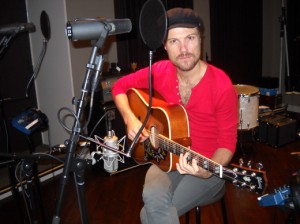
Thorald Koren of The Kin likes working the Visconti way (click on photo for enlarged view of mic setup).
Notes Visconti, “Live, the adrenaline makes you play faster. The band has it, the audience does too, so everyone accepts 5 BPM’s higher. And its sheer volume: Most bands just sound amazing live because it’s loud – like 110 dB.
“There are studio tricks to make it sound live at a low level, working with things like compression and distortion. In the studio you’re hearing microphones, but in the live setting you hear the PA. So sometimes in the past I’ve experimented with bringing a live PA into the studio, although you need a soundstage. Or I’ve put a kick drum through a bass amp to shake the room.
“Distortion is your best friend, really. Overloading a preamp or tape gives the impression that it’s more than you can bear, just on the verge of pain. Those are audio techniques to create that feeling at a low volume.
“But The Kin do play great in the studio. Sometimes they’ll have a click track, sometimes not, and it’s amazing how solid they are – tempo shifts might be one BPM slower. Keeping their live feel intact in the studio is what I’m trying to go for.”
One of Visconti’s earliest producing projects was recording with 20-year old David Bowie in 1967. For years afterward, the producer was making landmark albums in the analog domain — a realm where he observed a fundamental recording technique.
“We didn’t have Pro Tools in those days, so the selection of the musicians was very important,” he says. “The people who got to go into the studio were great musicians. These days, a lot of young bands – and I’m not talking about The Kin – go into studios prematurely, but they know the safety net [digital editing] exists. They know every beat will get fixed.
“With T. Rex we did five or six takes, but usually one or two would be enough. It’s the same with The Kin: We do two or three takes. We don’t have to belabor anything. You have to kind of trick yourself that you can’t fix it — although we do if we have to. We used to do it with a razor blade and tape, but it was harder and trickier to razor-cut Take Five and Eleven together. I did it then, and I’m doing it now. This time it’s with a few mouse clicks, but my ethic hasn’t changed.”
A Band of Brothers
When The Kin’s self-titled record arrives later this year, Tony Visconti will have respectfully preserved the genuine core that sets the group apart. “This is one of the few bands that talks about the emotion they’re going for in a song,” he says. “And since they’re brothers, they don’t bullshit each other. If they have a problem, they stop the session and we all discuss it.
“A lot of my notes aren’t technical notes – they’re notes about how the song should be portrayed. I really appreciate that: They think at a deep level. That’s why the record evokes strong feelings.”
— David Weiss
Please note: When you buy products through links on this page, we may earn an affiliate commission.







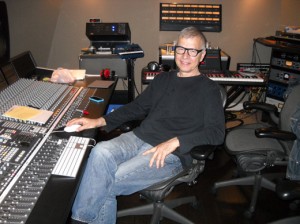
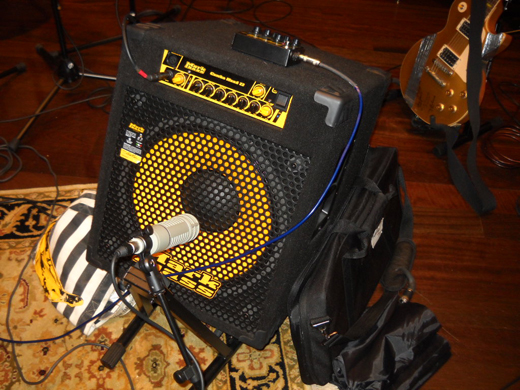
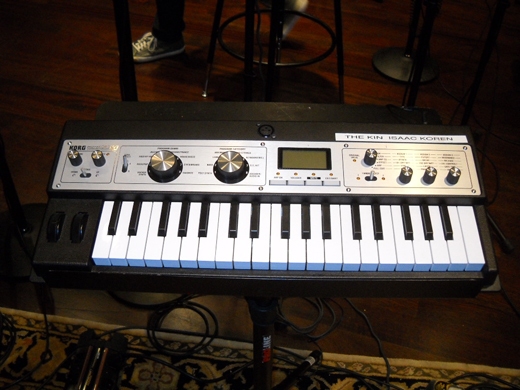
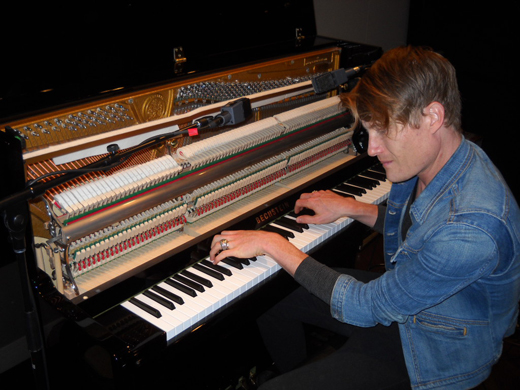
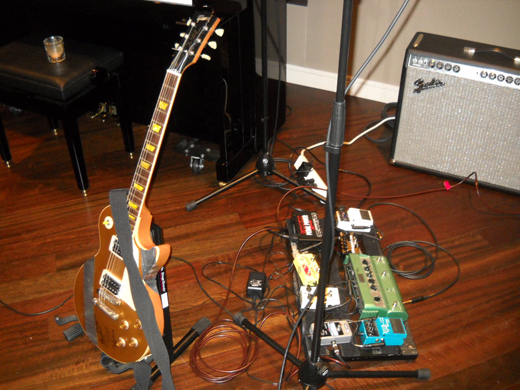
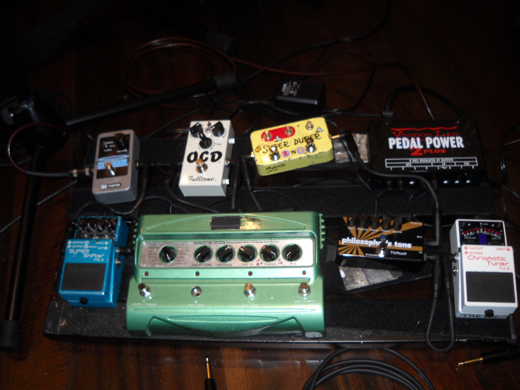
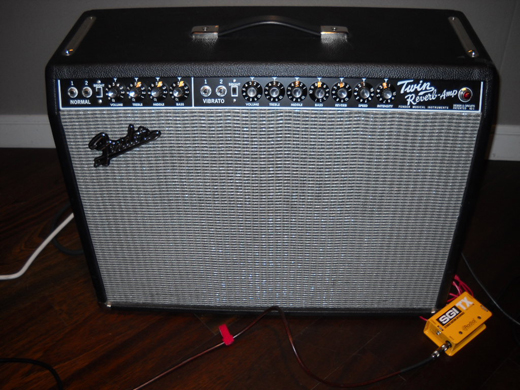
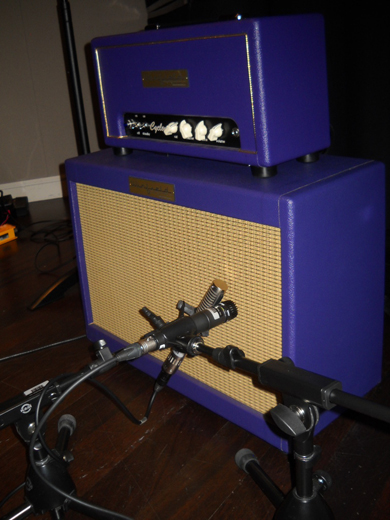
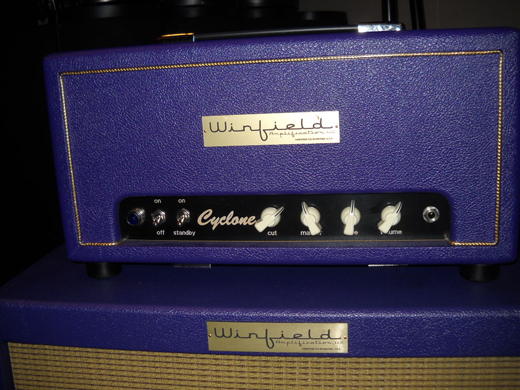
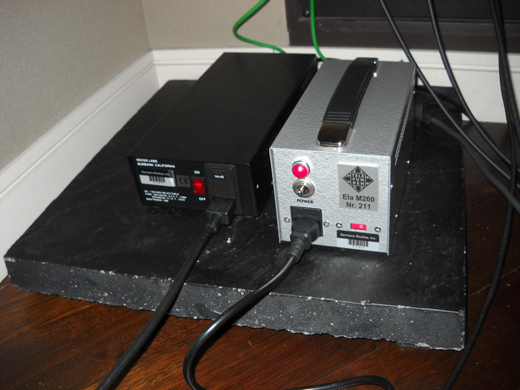
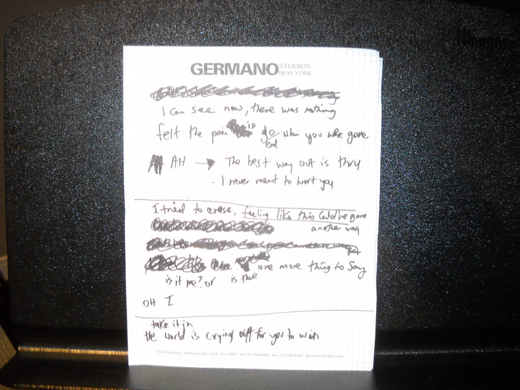
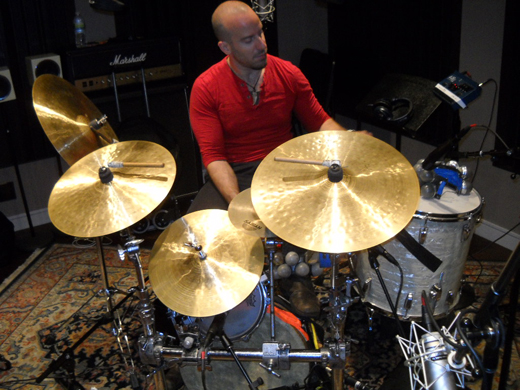
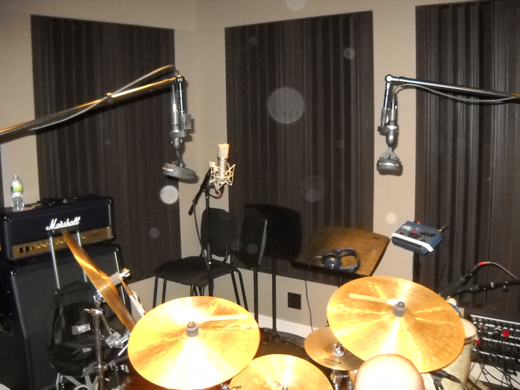
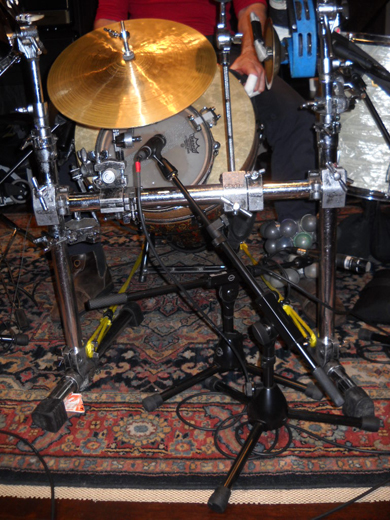

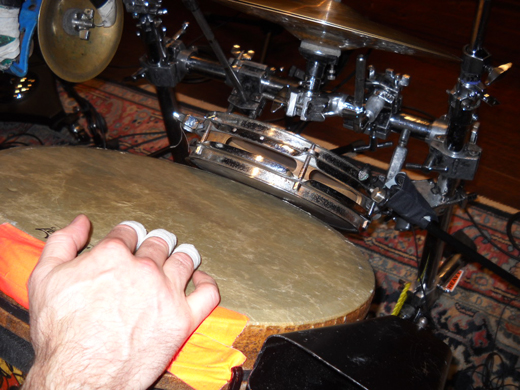
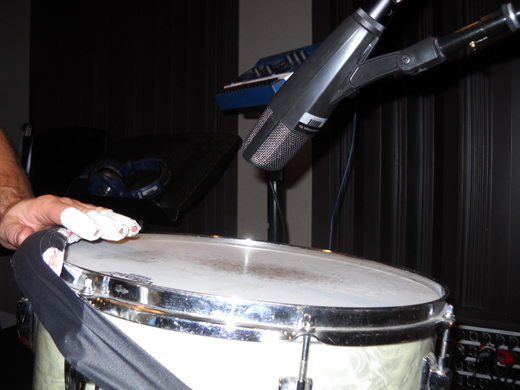
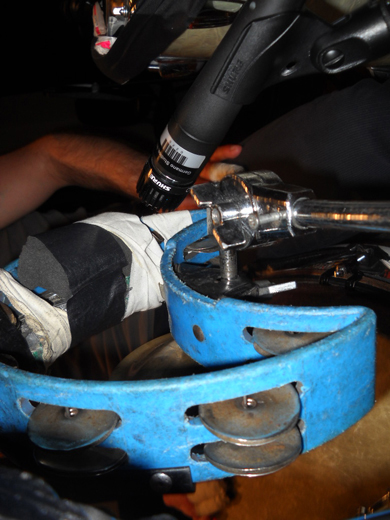
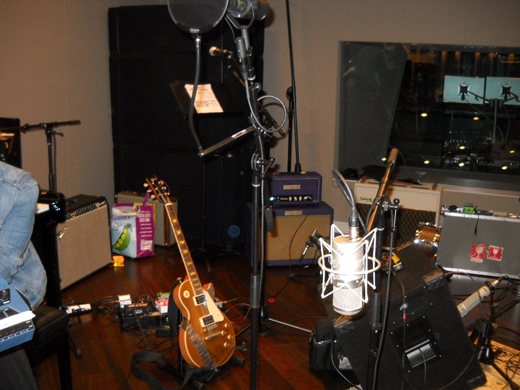
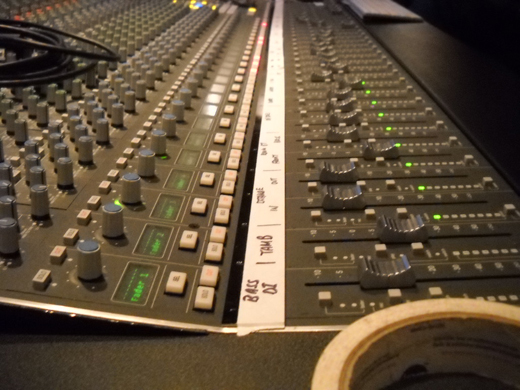
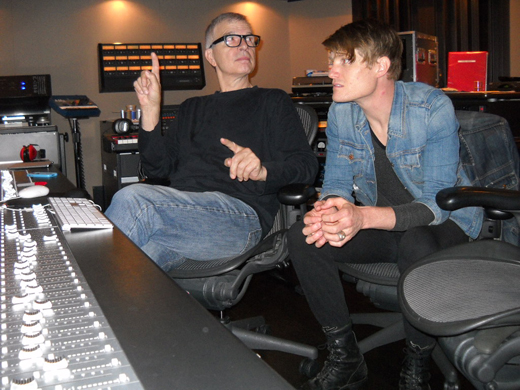
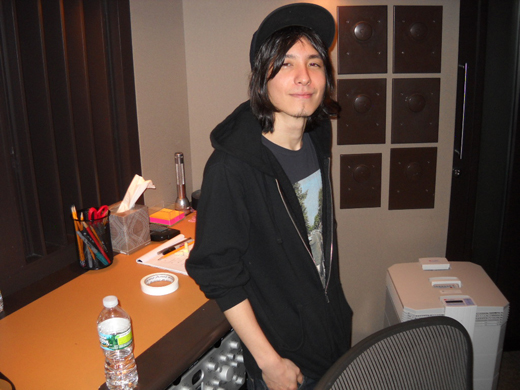
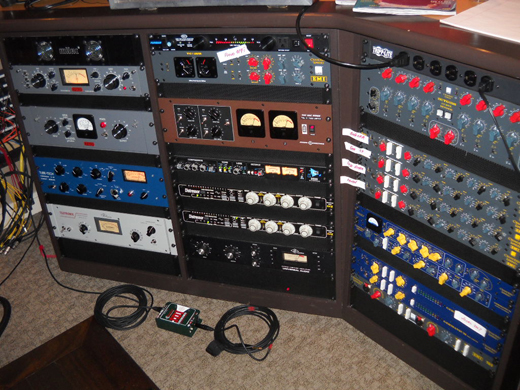
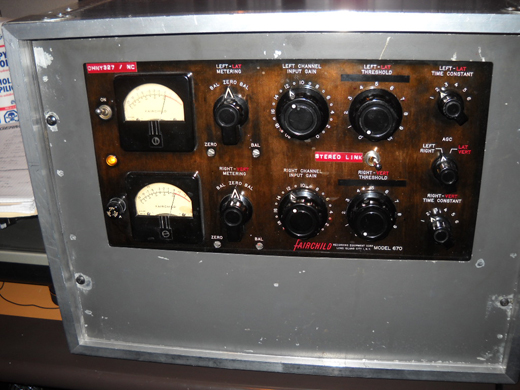
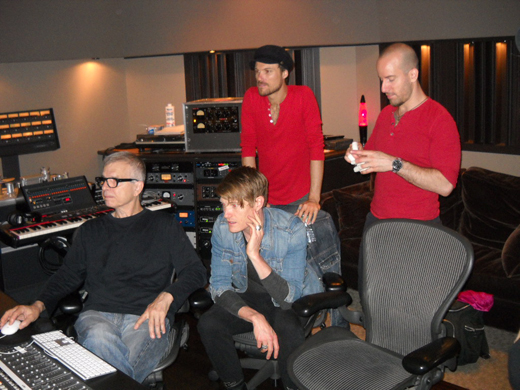
Gene Wells
June 4, 2012 at 4:29 am (12 years ago)LOVE these guys and cannot wait for their music to change the world…
Tony
June 5, 2012 at 3:11 pm (12 years ago)Great article David